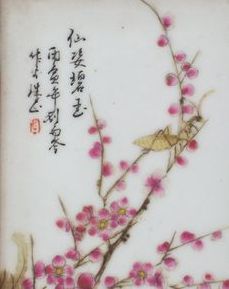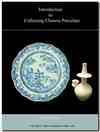Antique Porcelain Reproductions
I was a bit undecided whether to place this under antique porcelain reproductions or fakes. Its essential content is overlapping into both areas. The difference between a reproduction of an antique item and a fake antique is mainly its "intent".
Definition of a reproduction as opposed to a fake
Definition of a reproduction as opposed to a fake A reproduction is a newer copy of an earlier or ancient type of porcelain or pottery. Made with the intent of re-creating its beauty for the benefit of a later generation, it was made in reverence to the abilities of artisans of the past, so to say.
|
Many fakes of Chinese antique ceramics, on the other hand, are
made and sold with the sole intent to deceive. Without this intent they
would be just reproductions. |
It is
unfortunate that this sprawling porcelain production center with a
relevant history of over a thousand years is now heavily involved in
faking too... and this apparently with the knowledge of the China's government.
Reproductions of antique ceramics were already made in ancient China.
The earliest known reproductions are copies of Jun wares made in the
Yuan dynasty. However, that is not considered outright faking as it was
made in continuation of the Song dynasty ceramics production.
|
|
 |
The real imitating or copying began during the Ming and Qing
dynasties, when artisans of Jingdezhen began imitating ceramics of
earlier periods.
Sometimes this was apparently done to such a degree
(in the past as well as today) it is very difficult to determine
whether an item is, for example, a real Ming piece or a reproduction
made during the early Qing dynasty.
Later on in the Qing dynasty
porcelain items of the early Qing dynasty was also copied. Some of these
antique reproductions were ordered by high-ranking court officials.
|
Of course, from our present viewpoint these copies from the Qing
dynasty or earlier also have a legitimate status as antiques. These
antique porcelain reproductions were never intended to deceive. |
 |
|
Read more about antique porcelain reproductions in view to faking of antiques
Europe has also copied some Chinese porcelain in the 19th century and earlier.
European imitations of Chinese porcelain.
Information shows that some of these old, high-quality European replicas were imported into
China in recent years -- we just have to wonder if these antique porcelain reproductions from
Europe are now going to be passed off as genuine Chinese antiques too...?
Age faking methods

